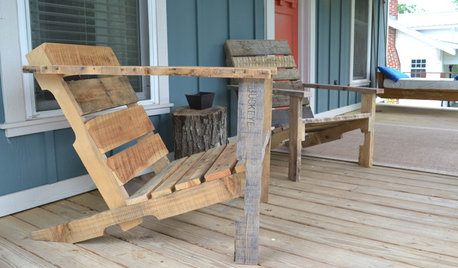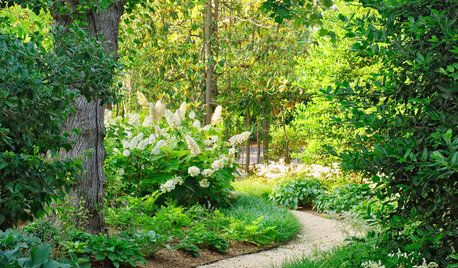It can be fun to breed your own zinnias - Part 7
maineman
15 years ago
Related Stories

WALL TREATMENTSCan't Find the Right Wallpaper? Make Your Own
For one-of-a-kind walls, just use your imagination. Custom wallpaper is easier and less expensive than you might expect
Full Story
TRANSITIONAL HOMESHouzz Tour: Part Traditional, Part Modern and All Family Friendly
With clean lines, vintage touches and durable surfaces everywhere, this Los Angeles home balances tastes and needs beautifully
Full Story
PETSWhat Chihuahuas Can Teach Us About Interior Design
Who knew these tiny dogs could be such a huge fount of design tips? Houzzers did
Full Story
POOLSWe Can Dream: 7 Things to Consider Before Investing in an Outdoor Spa
Check out these tips and tricks for adding a luxurious outdoor spa to your landscape
Full Story
MOST POPULARThe Many Paths of Design, Part 1
Blame engineering issues, unforeseen revisions or even the Internet. As these diagrams show, it's probably not your fault
Full Story
WOODWORKINGBuild Your Own Wooden Deck Chair From a Pallet — for $10!
Take the ecofriendly high road with a low-cost outdoor chair you make yourself
Full Story
HOUZZ TVHouzz TV: This Dream Midcentury Home in a Forest Even Has Its Own Train
Original wood ceilings, a cool layout and, yes, a quarter-scale train persuaded these homeowners to take a chance on a run-down property
Full Story
LANDSCAPE DESIGNUnwind in Your Own Private Garden Escape
When the world is getting on your last nerve, an outdoor refuge can soothe and nurture. Here's how to design a garden with relaxing in mind
Full Story
INSPIRING GARDENSWhat We Can Learn From Longwood Gardens’ New Meadow
Sustainability, ecology, native plant communities ... this public garden is brimming with lessons on horticulture for home gardeners
Full Story
GARDENING AND LANDSCAPINGHow to Get an Outdoor Kitchen of Your Own
New project for a new year: Build a cooking space for your yard or patio to make entertaining a breeze
Full Story





joshuaslc
holtzclaw
Related Professionals
Arnold Landscape Architects & Landscape Designers · Ballenger Creek Landscape Architects & Landscape Designers · Erie Landscape Architects & Landscape Designers · Forest Park Landscape Architects & Landscape Designers · Brownsville Landscape Contractors · Mashpee Landscape Contractors · Nanuet Landscape Contractors · San Antonio Landscape Contractors · Thonotosassa Landscape Contractors · White Bear Lake Landscape Contractors · Baileys Crossroads Landscape Contractors · Grand Rapids Driveway Installation & Maintenance · Campbell Driveway Installation & Maintenance · Gladstone Decks, Patios & Outdoor Enclosures · Monroeville Decks, Patios & Outdoor EnclosuresmainemanOriginal Author
joshuaslc
mainemanOriginal Author
jackier_gardener
mainemanOriginal Author
jackier_gardener
mainemanOriginal Author
holtzclaw
jackier_gardener
mainemanOriginal Author
mainemanOriginal Author
joshuaslc
mainemanOriginal Author
holtzclaw
jackier_gardener
joshuaslc
davemichigan
mainemanOriginal Author
mainemanOriginal Author
jackier_gardener
davemichigan
mainemanOriginal Author
davemichigan
jackier_gardener
brockthegreek
jackier_gardener
mainemanOriginal Author
jackier_gardener
mainemanOriginal Author
jackier_gardener
mainemanOriginal Author
mainemanOriginal Author
mainemanOriginal Author
mainemanOriginal Author
mainemanOriginal Author
mainemanOriginal Author
jackier_gardener
holtzclaw
mainemanOriginal Author
davemichigan
mainemanOriginal Author
mainemanOriginal Author
holtzclaw
mainemanOriginal Author
brockthegreek
mainemanOriginal Author
adatt
zen_man